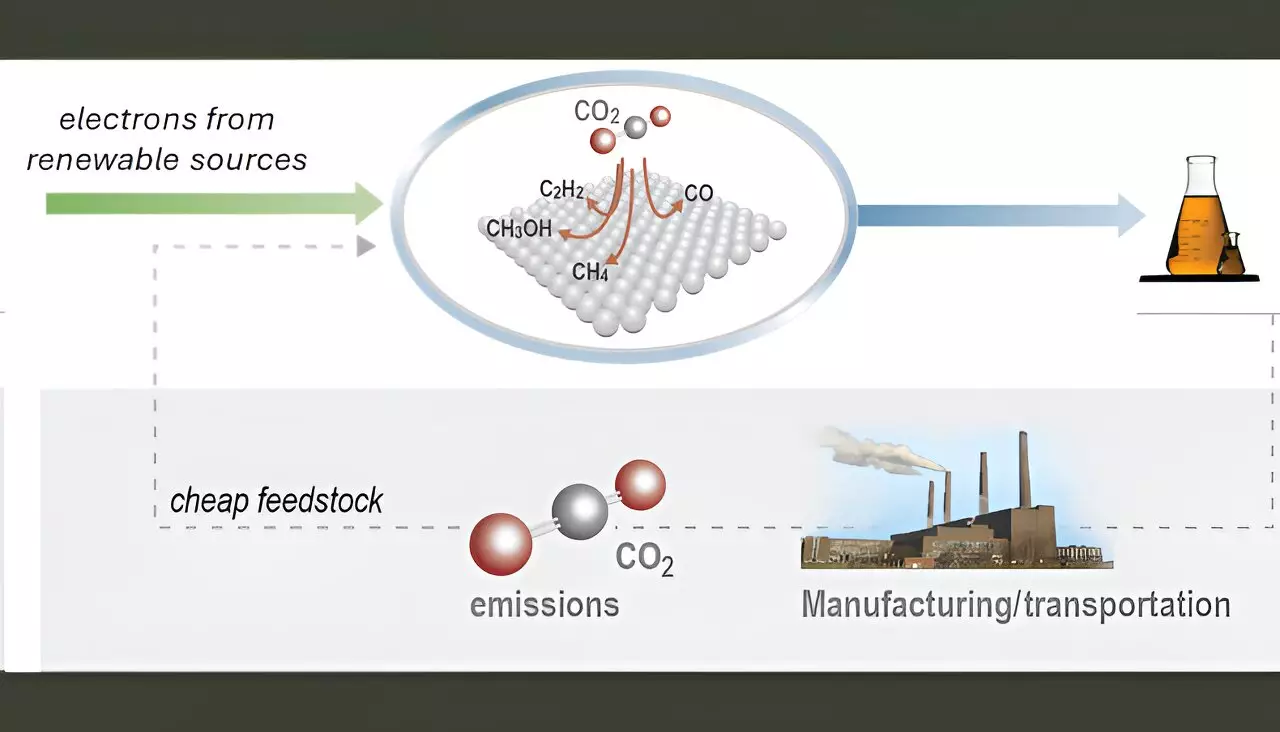The pressing need to combat climate change necessitates innovative approaches to reduce greenhouse gas emissions, particularly carbon dioxide (CO2). An intriguing solution lies in the electrochemical conversion of CO2 into valuable chemical products using renewable electricity sources like solar and wind energy. This process not only mitigates the effects of CO2 emissions but also creates high-demand chemicals and fuels essential for everyday life. Products like ethylene, ethanol, and acetic acid play crucial roles within the chemical industry and as potential fuel alternatives. Nonetheless, while effective designs for electrolyzers—devices that facilitate these chemical transformations under industrially relevant conditions—have emerged, significant challenges remain, primarily surrounding the stability and selectivity of the utilized catalysts.
The Catalyst Conundrum
Catalyst development is a cornerstone of successful CO2 conversion; however, researchers face hurdles in achieving optimal performance. The primary issue is the need to separate the intrinsic properties of the catalysts from the influences of their integration methods in diverse electrolyzer configurations. Most breakthroughs in catalyst efficiency have pointed toward copper and its alloys, as they are currently the only materials demonstrating the ability to convert CO2 into multi-carbon products like ethylene and propanol effectively. The many variables involved in catalyst integration complicate the ability to assess their performance accurately, posing a challenge for effective commercialization.
Innovative Solutions from LLNL
In an effort to overcome these challenges, a team of researchers at Lawrence Livermore National Laboratory (LLNL), together with collaborators from several esteemed institutions, has pioneered an innovative catalyst coating platform utilizing physical vapor deposition (PVD). This method allows for unparalleled control over critical aspects of the catalyst’s characteristics including thickness, composition, morphology, and porosity. This level of precision enables researchers to fine-tune the catalytic properties without altering the interaction between the catalyst and the electrolyzer, a significant step towards realizing high-efficiency CO2 conversion.
Within their research, the LLNL team systematically investigated the performance of copper-based dilute alloy catalysts, which are traditionally challenging to synthesize and integrate into electrochemical systems. These specially designed alloys have been instrumental in promoting the conversion of carbon monoxide intermediates into desirable multi-carbon products. The team’s simulation efforts reveal how fine-tuning the catalyst’s energy landscape through these dilute alloys can enhance the efficiency of CO2 electrolysis. By focusing on improving the coupling phenomena, researchers are making strides toward generating cleaner, more sustainable feedstocks that meet industry demand.
An important distinction of the PVD approach lies in its operational efficiency and sustainability benefits over conventional manufacturing methods. PVD results in minimal waste generation and a reduction in labor intensity, which can compensate for the initially higher capital expenditure. Through the development of technologies like this, industries can look forward to improved operational benchmarks, thereby facilitating a transition toward greener practices within both the chemical and transportation sectors.
Broader Implications for Global Sustainability
The implications of advancing our understanding of CO2 conversion are vast. As industries grapple with regulatory pressures and societal demands for sustainable practices, the capabilities provided by researchers at LLNL could pave the way for a more circular economy. The reduction of greenhouse gas emissions through CO2 recycling not only helps mitigate climate impacts but also builds a resilient economic framework by transforming waste into resource.
The journey toward sustainable chemical production from CO2 is fraught with challenges, but recent advances in catalyst technology, particularly through the work being done at LLNL, provide a beacon of hope. With ongoing innovation in the field of electrochemical conversion, there is an optimistic pathway toward establishing a greener future. As research continues to evolve, so too will the solutions that combat climate change while meeting the world’s growing needs for energy and materials.

